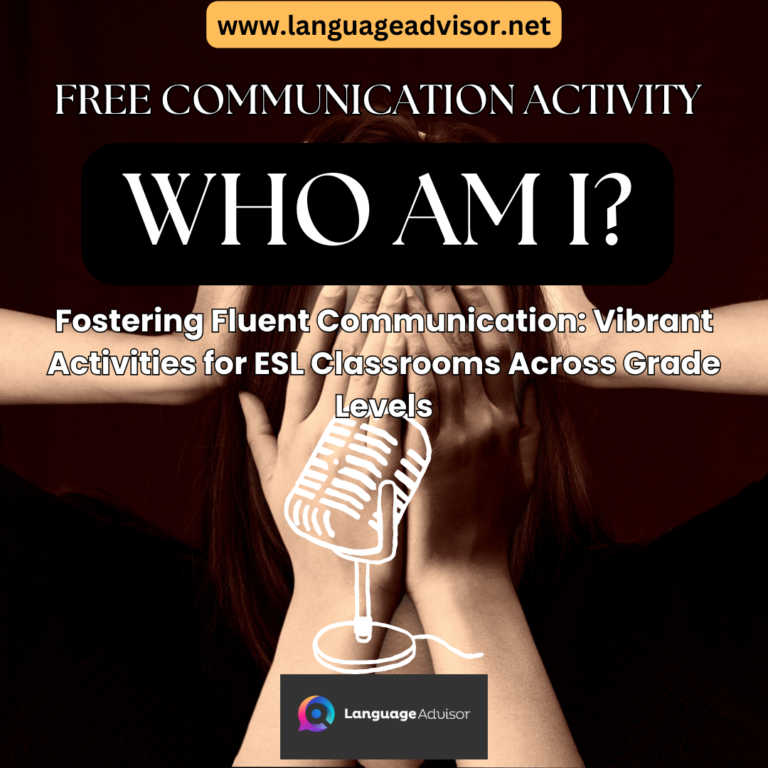TALKING TO FOREIGNERS – Communication Activity. Fostering Fluent Communication: Vibrant Activities for ESL Classrooms Across Grade Levels
TALKING TO FOREIGNERS – Communication Activity

Fostering Fluent Communication: Vibrant Activities for ESL Classrooms Across Grade Levels
Effective communication is a cornerstone of language acquisition, and in our journey together, we’ll delve into creative and interactive strategies crafted to amplify spoken language skills. Whether you’re a dedicated educator seeking fresh ideas to enliven your ESL classroom or a student eager to refine your English communication abilities, this post serves as your guide to fostering effective verbal expression through innovative activities.
From lively games and role-playing exercises tailored for elementary learners to nuanced discussions and real-world communication scenarios for junior high and senior high school students, our curated activities cater to the diverse needs of ESL classrooms. Get ready to infuse energy into your language lessons and witness the transformative power of engaging communication activities that transcend traditional language instruction.
So, let’s dive into this exploration of language and communication together, unraveling a tapestry of activities that will inspire and elevate language skills across different age groups. Whether you’re at the beginning of your language-learning journey or seeking advanced strategies, this blog post has something for everyone.
Let the journey towards fluent communication in the ESL classroom begin!

TALKING TO FOREIGNERS
DESCRIPTION
Pre-teach the following phrases using a variety of examples:
What is mochi made from? “It’s made of………..”
What does Kodomo no hi mean? “It means………..”
When is the Tanabata festival? “It’s held on…………”
Do I have to take a gift? “You don’t have to………” “You should……..”
Give the small groups a “talking to foreigners” board game. Students play in turn by throwing a dice. Another student adopts the role of “foreigner” and asks the question landed on.
Materials
Make up a simple board game with the following suggested questions:
What kind of food is served at an Izakaya restaurant?
Do you eat any kind of special food at New Year?
What is sake made from?
How high is Mt. Fuji?
What is special about the water at Kiyomizu Temple?
What is shochu made from?
What is tempura?
What is natto made from?
Where can I buy a yukata?
How fast does the bullet train go?
What is special about Tanabata?
What can I see if I go to Kyoto?
What is o-bento?
What does Keiro no Hi mean in English?
Do I have to take my shoes off in a restaurant?
What does Bunka No Hi mean in English?
What do Japanese people do on New Year’s Day?
What is Setsubun?
What is the specialty food in Fukuoka?
What do people do at Obon?
What is tofu made from?
What kind of souvenirs should I buy?
What is the national sport of Japan?
What is Kabuki?
What do people do at a hanami party?
What is daikon?
What does Hinamatsuri mean in English?
What is ramen?
Why do people throw beans at Setsubun?
What is a kotatsu?
What is shoji?
When do people wear kimono?
What do people do at Christmas time in Japan?
What kind of food is served at yakitori?
Should I take a gift to the host of the party?
TALKING TO FOREIGNERS – REMARKS
This can be a good warm-up activity.

Also check out these communication activities

Did you find this article useful? If you have additional ideas, share them in the comments section below












